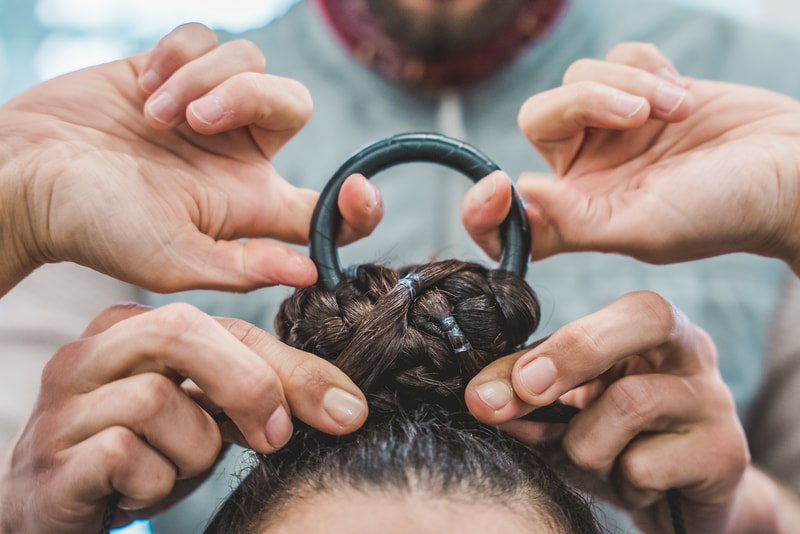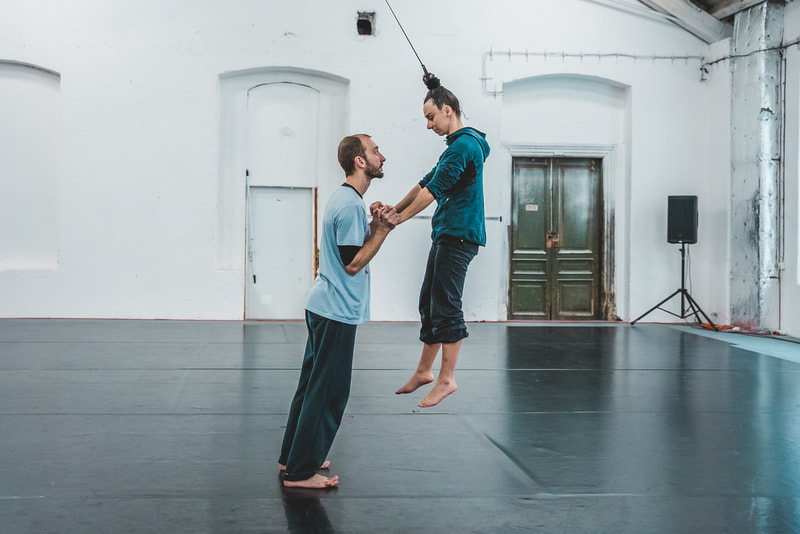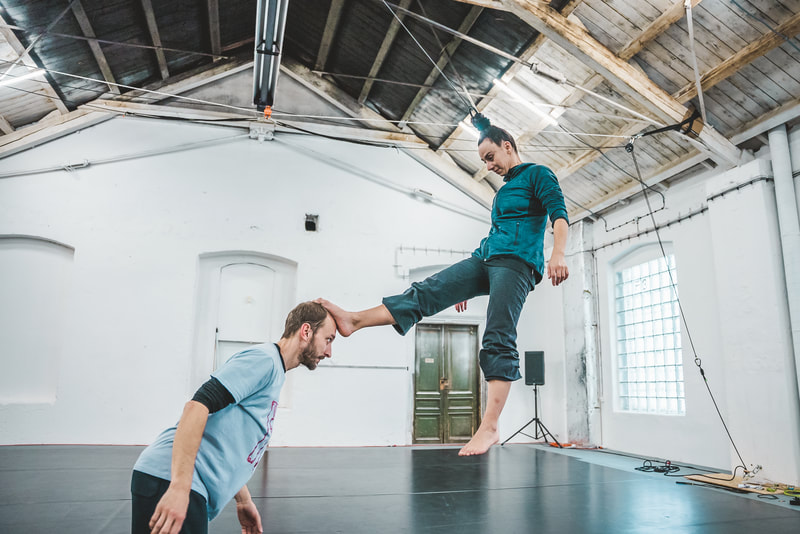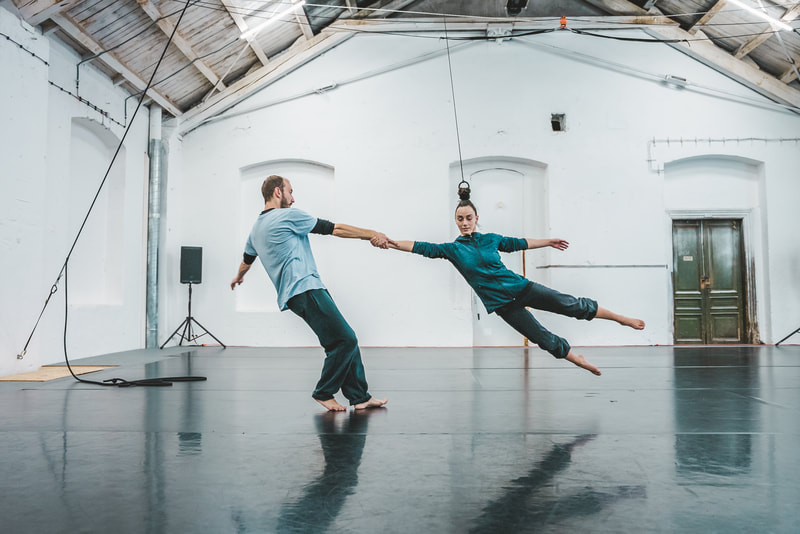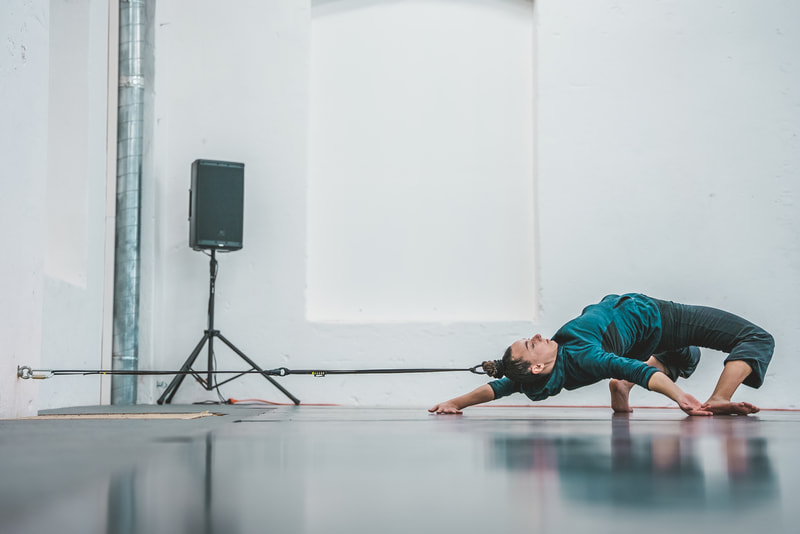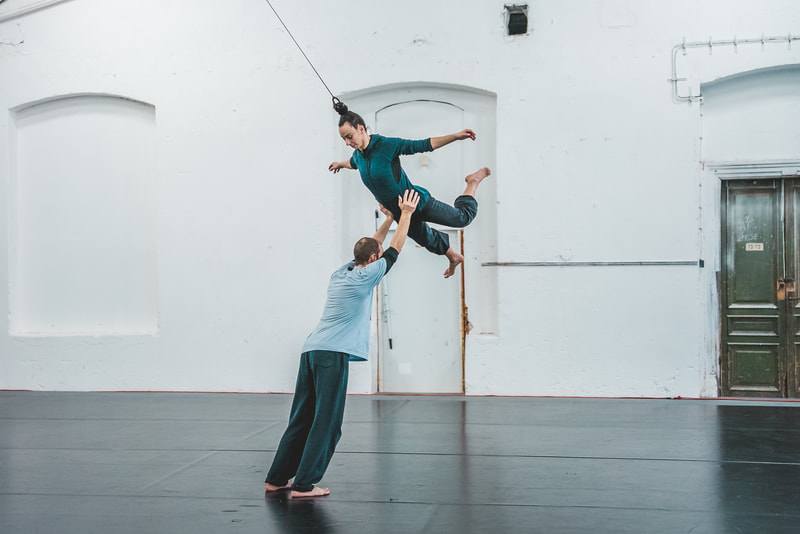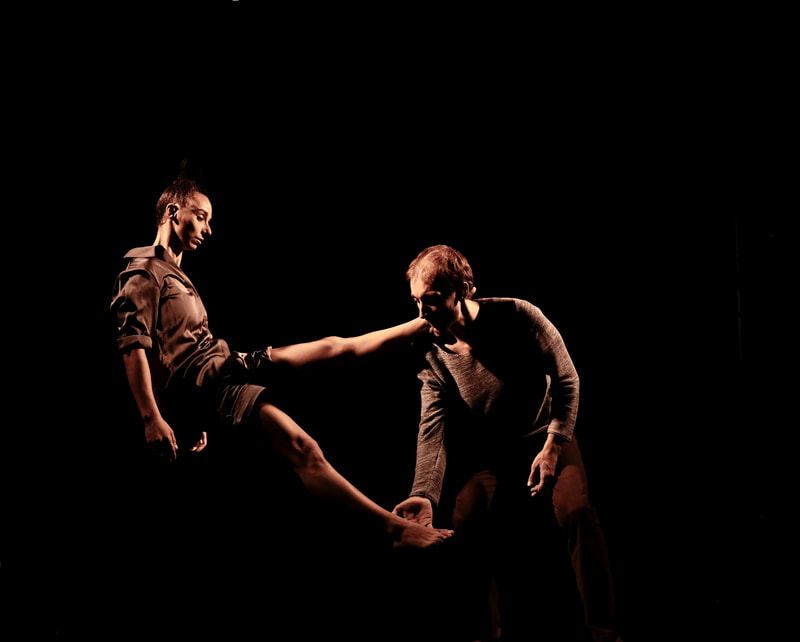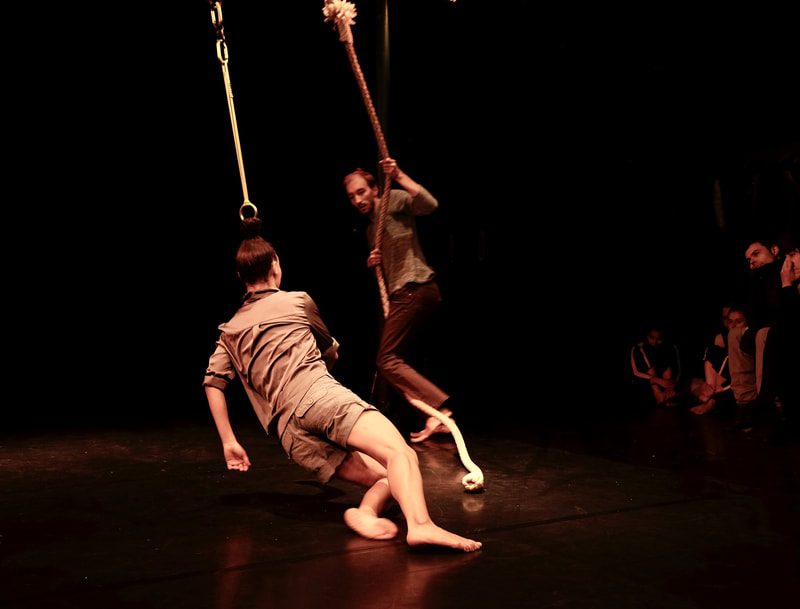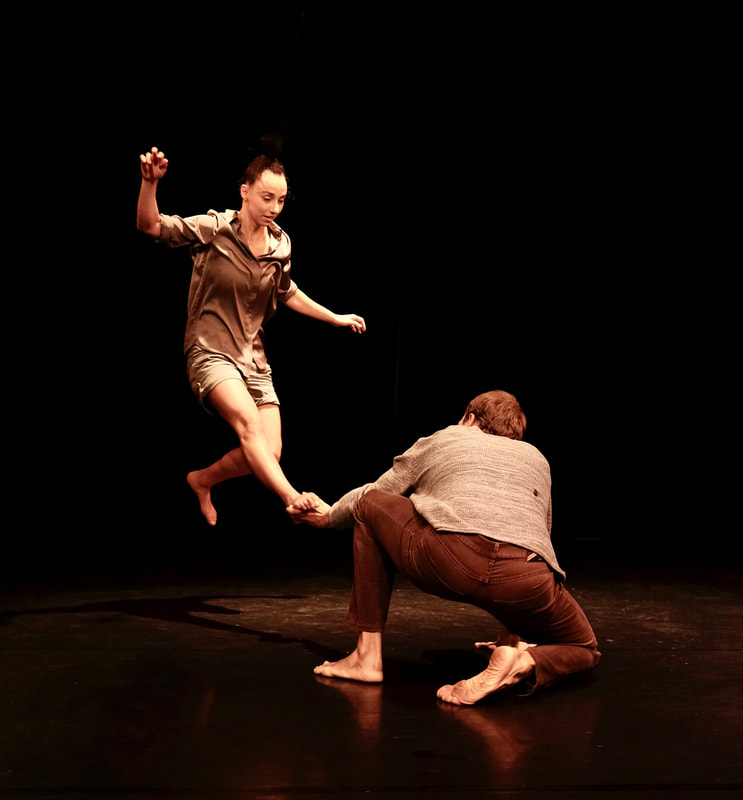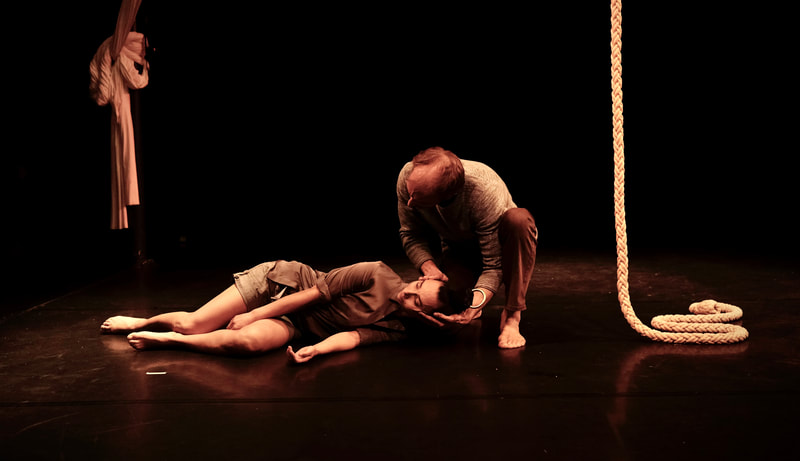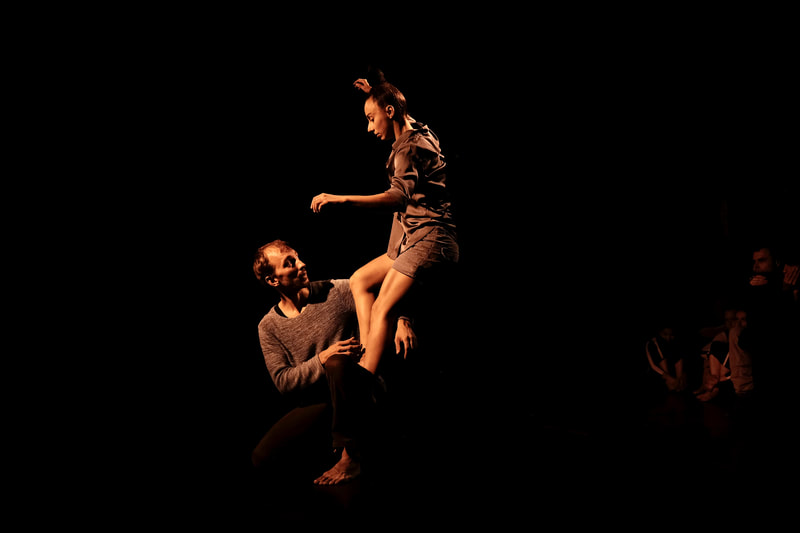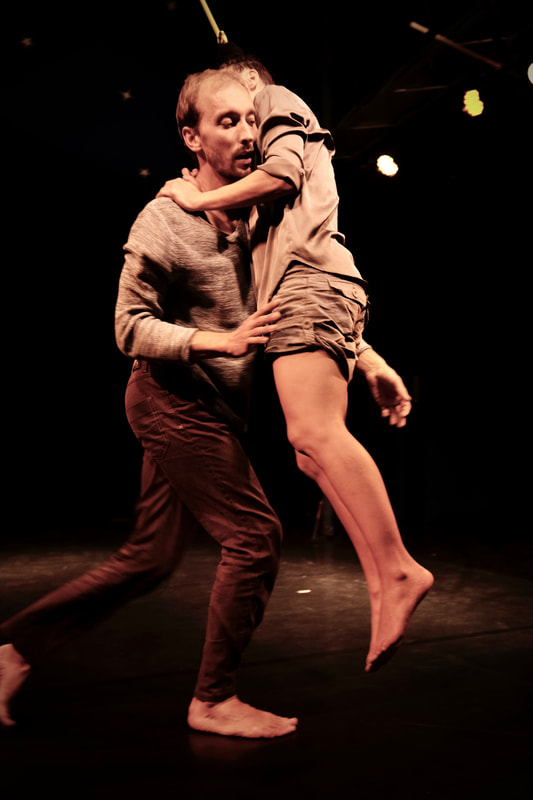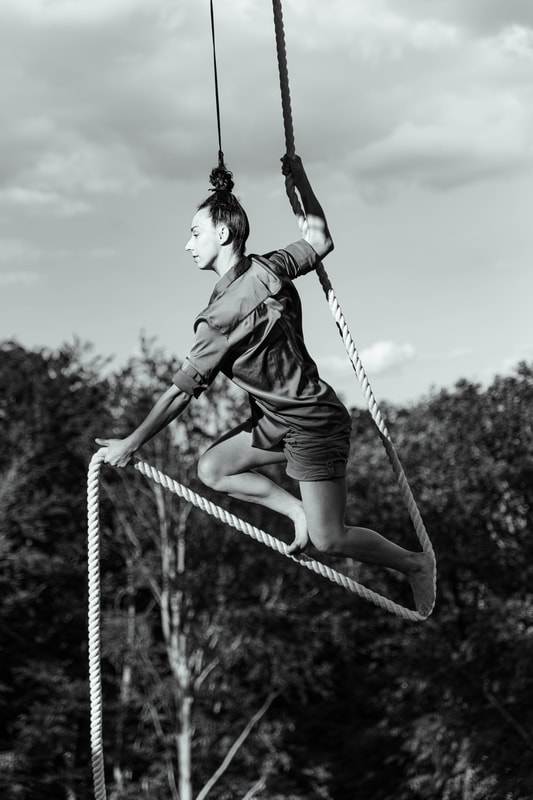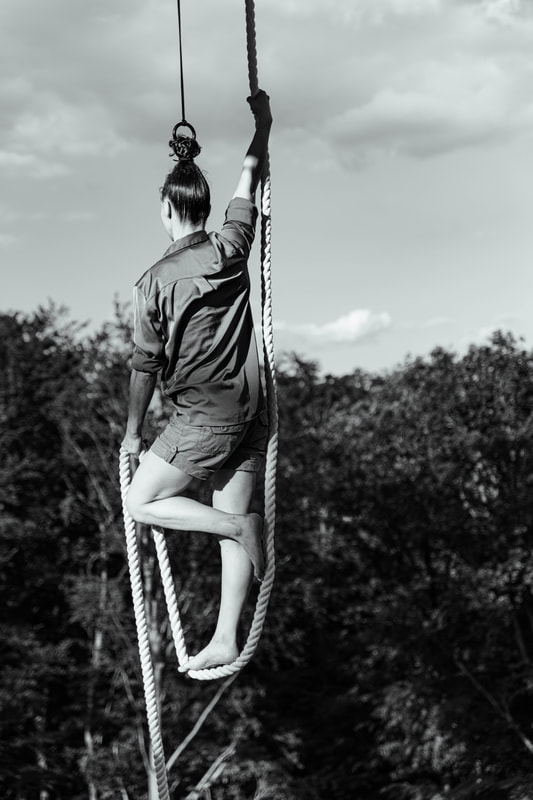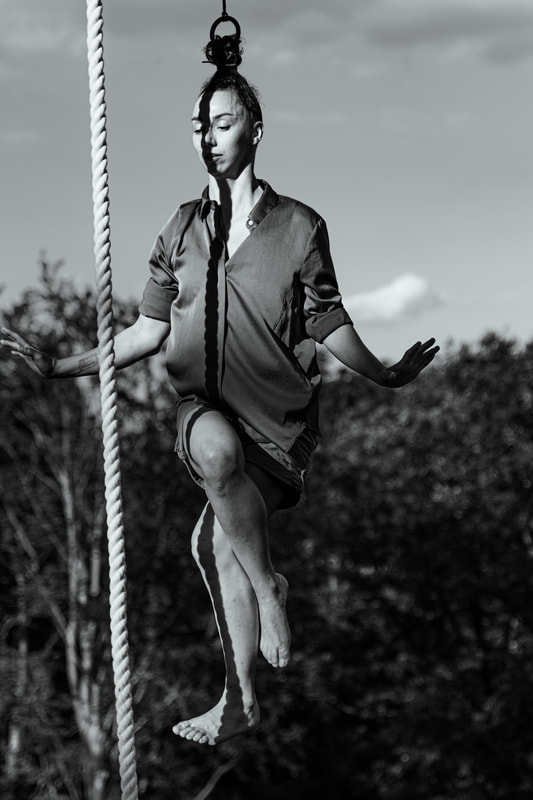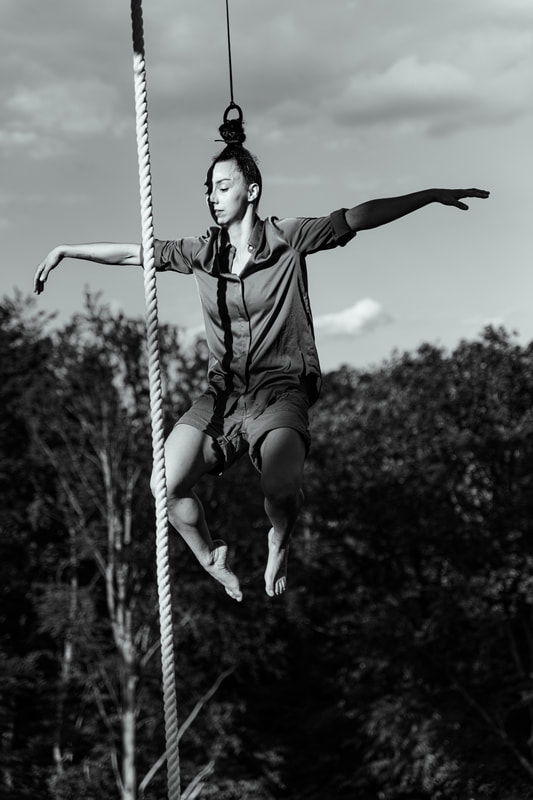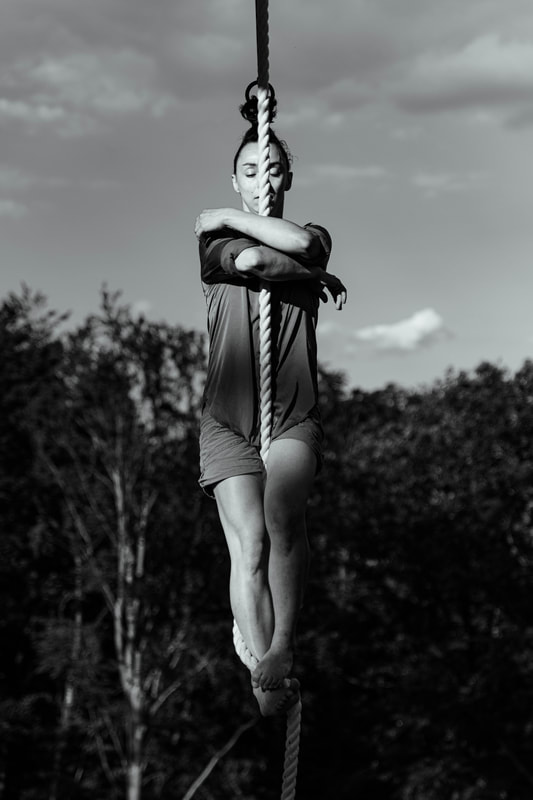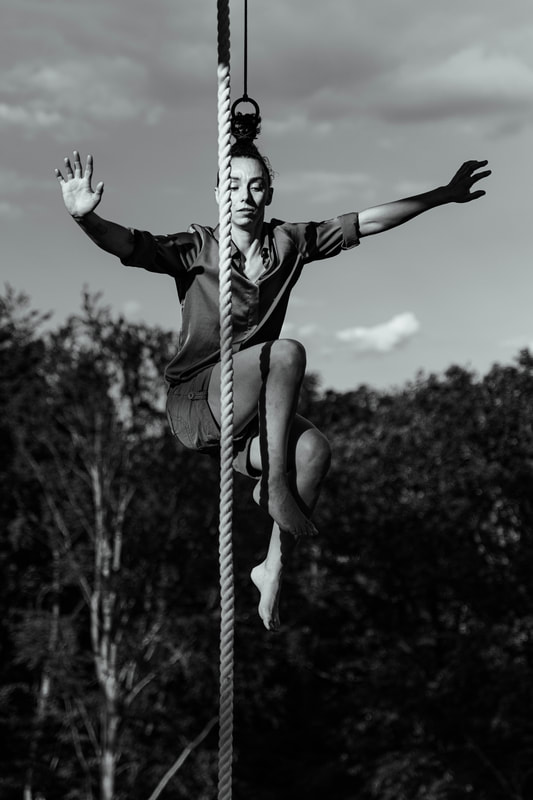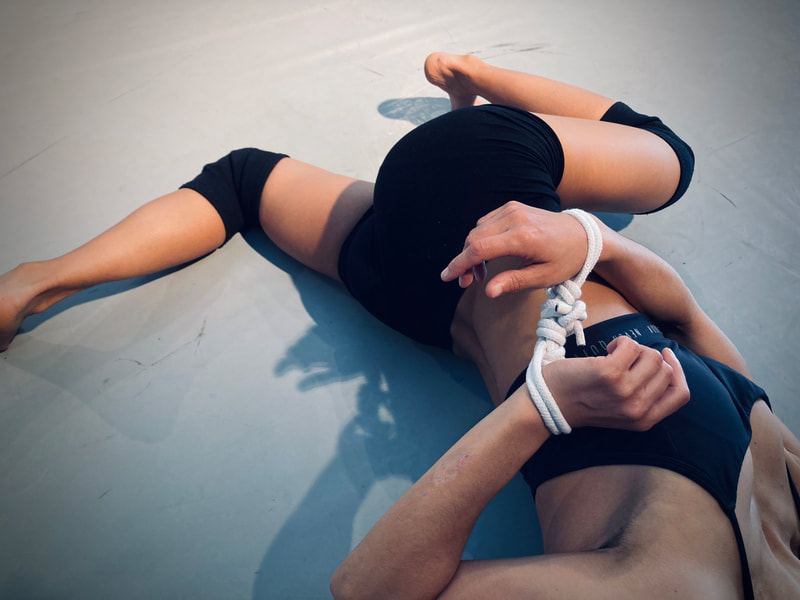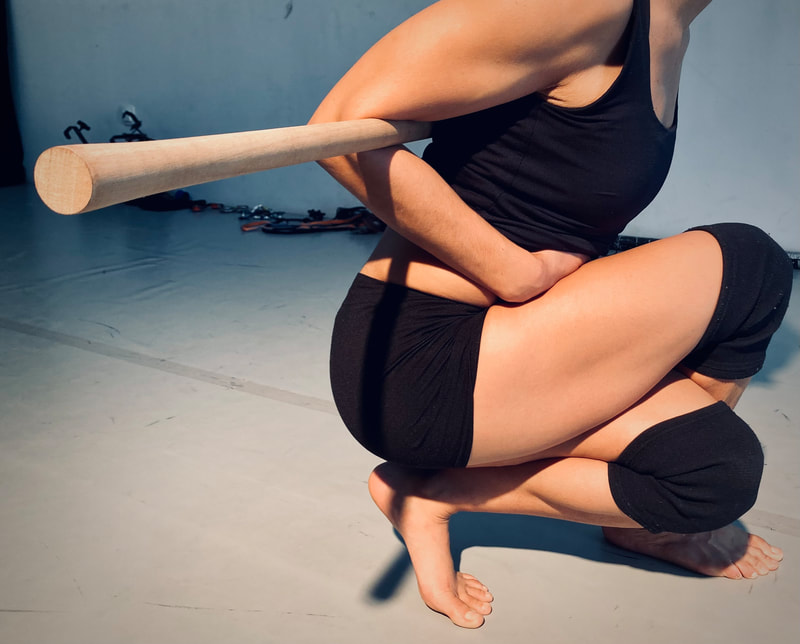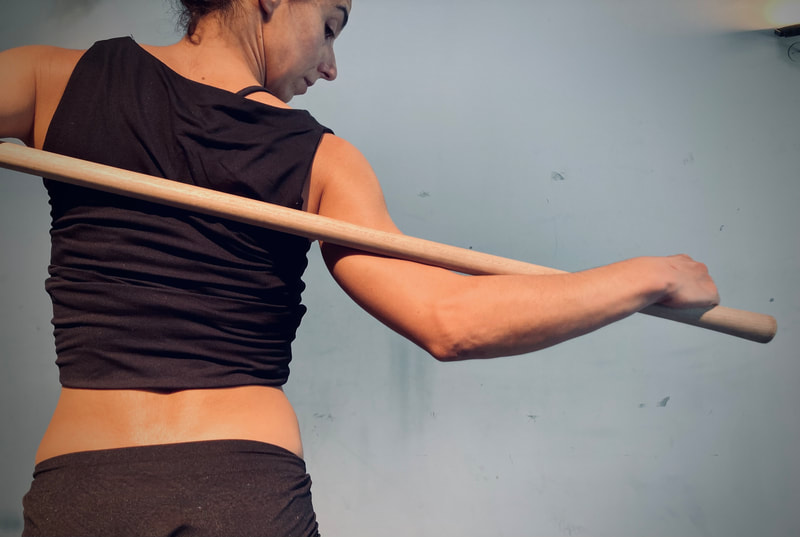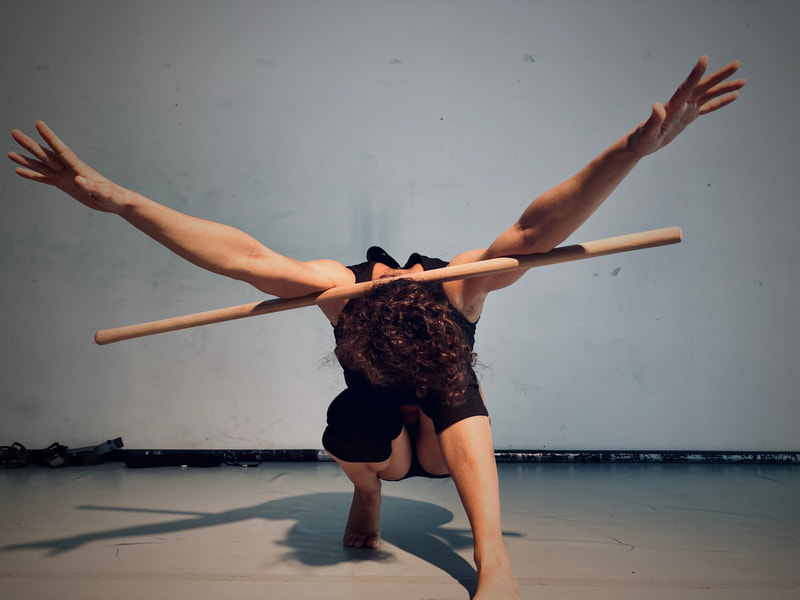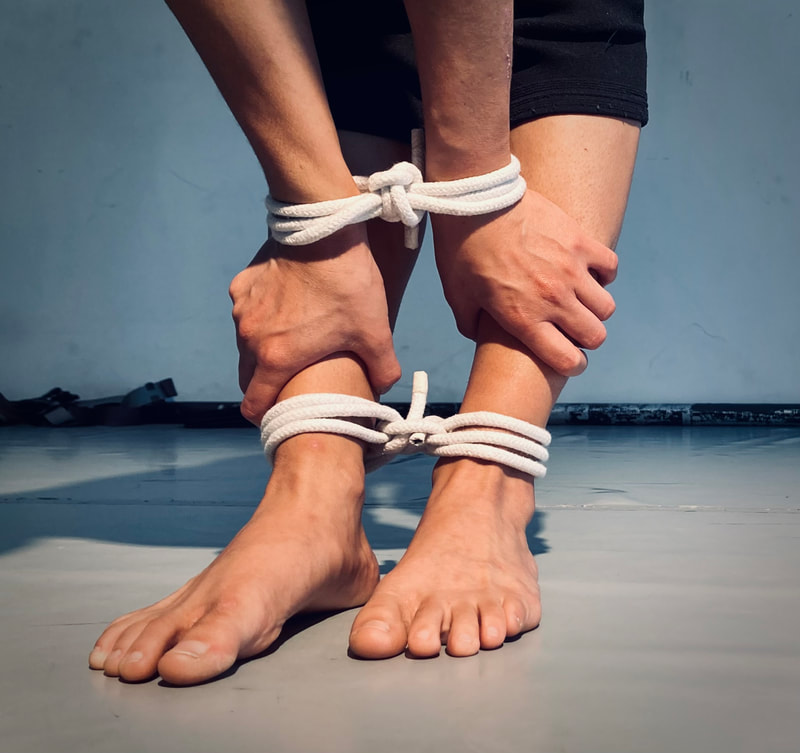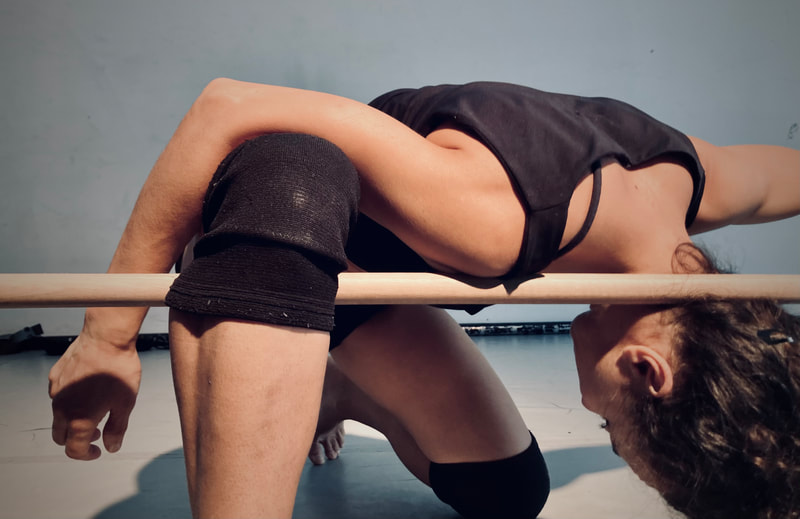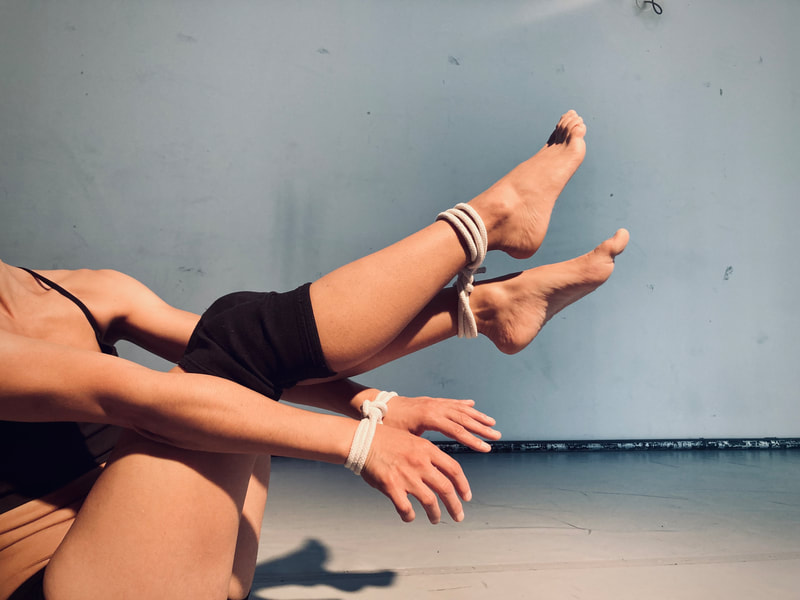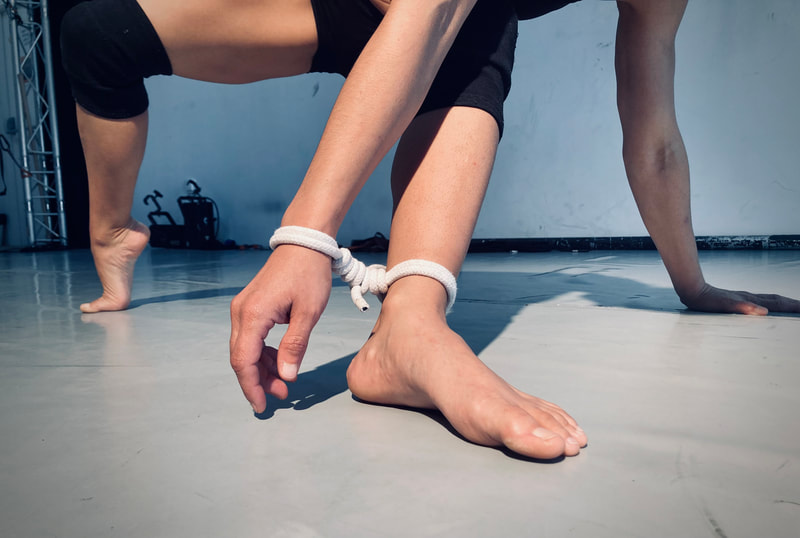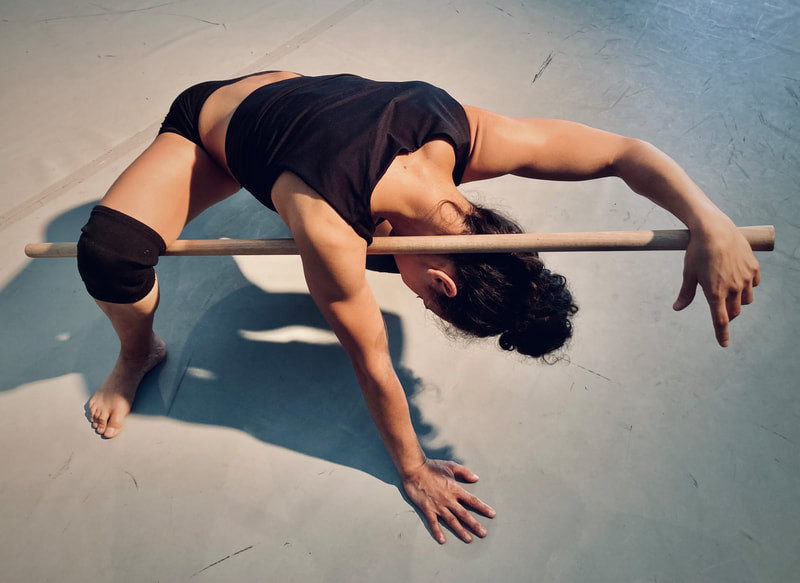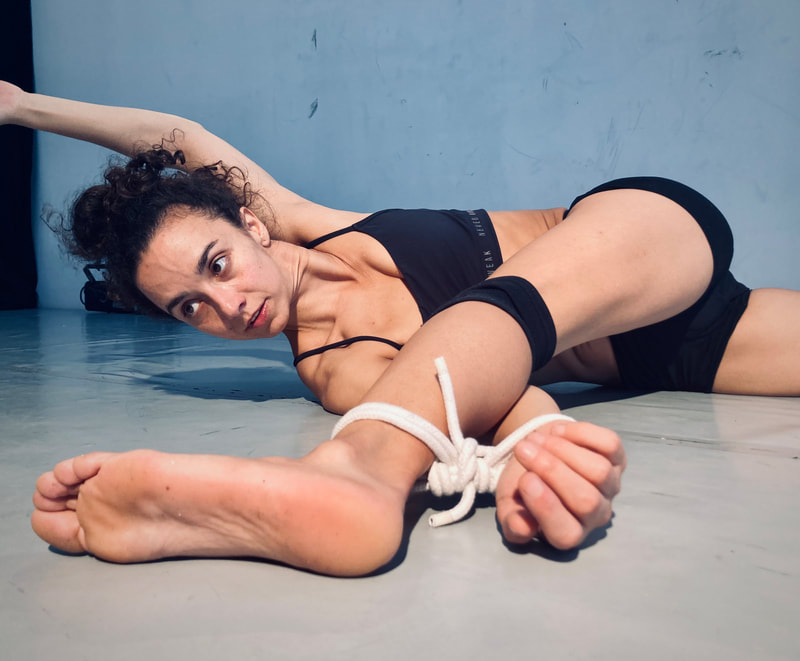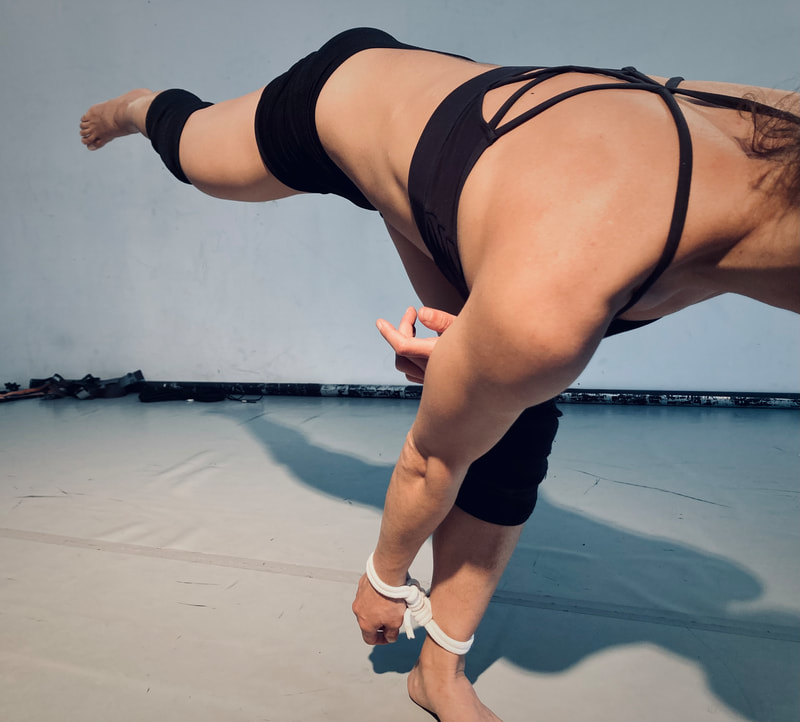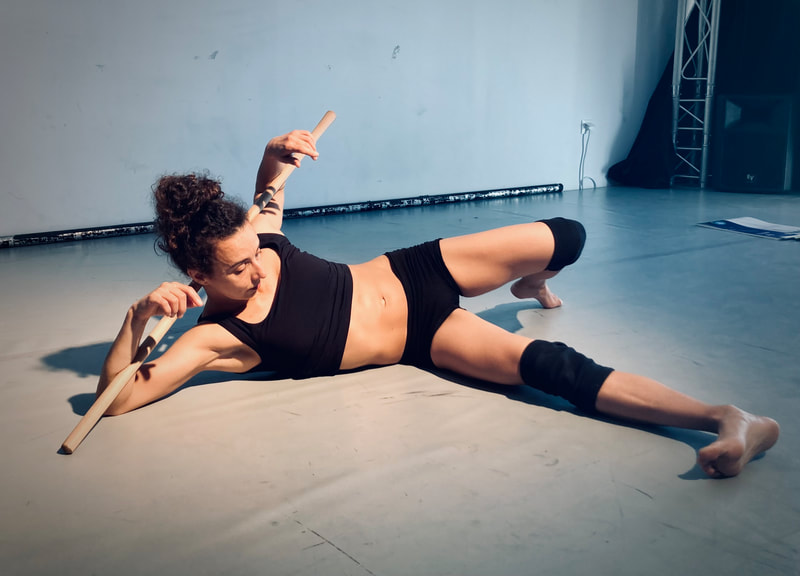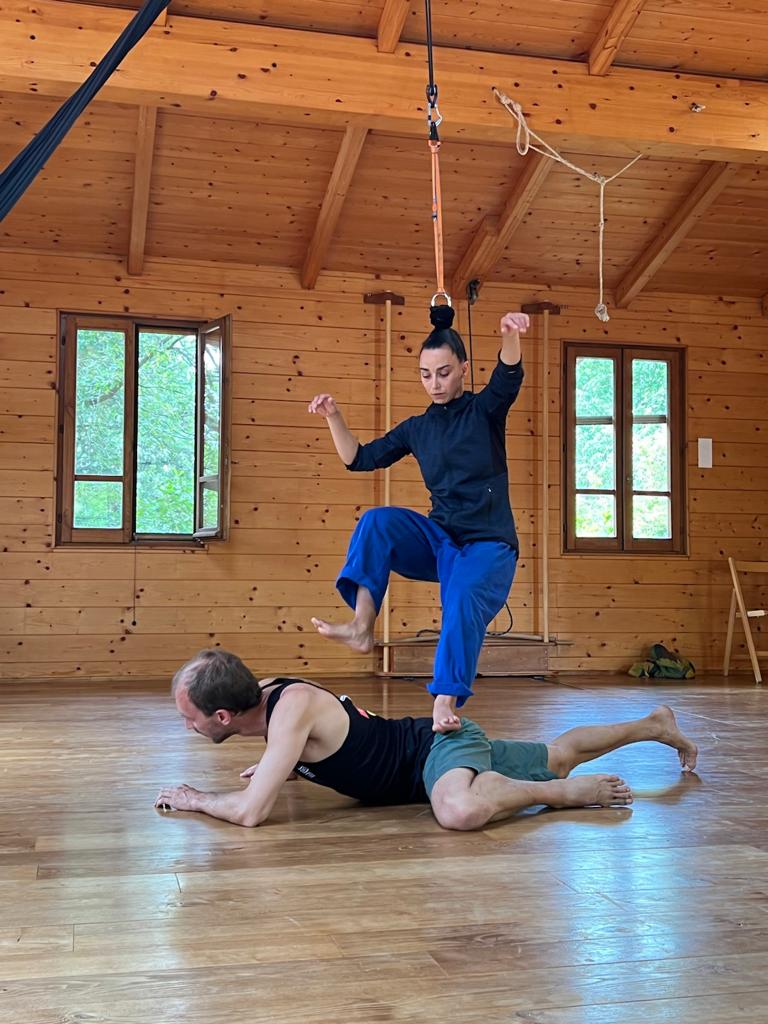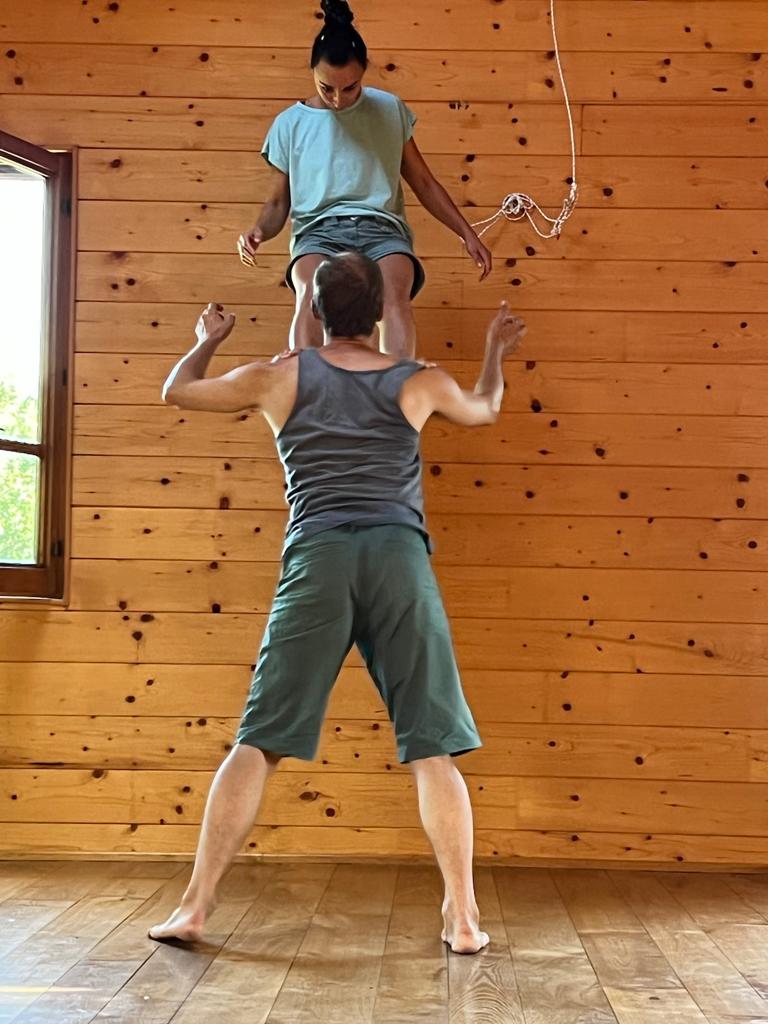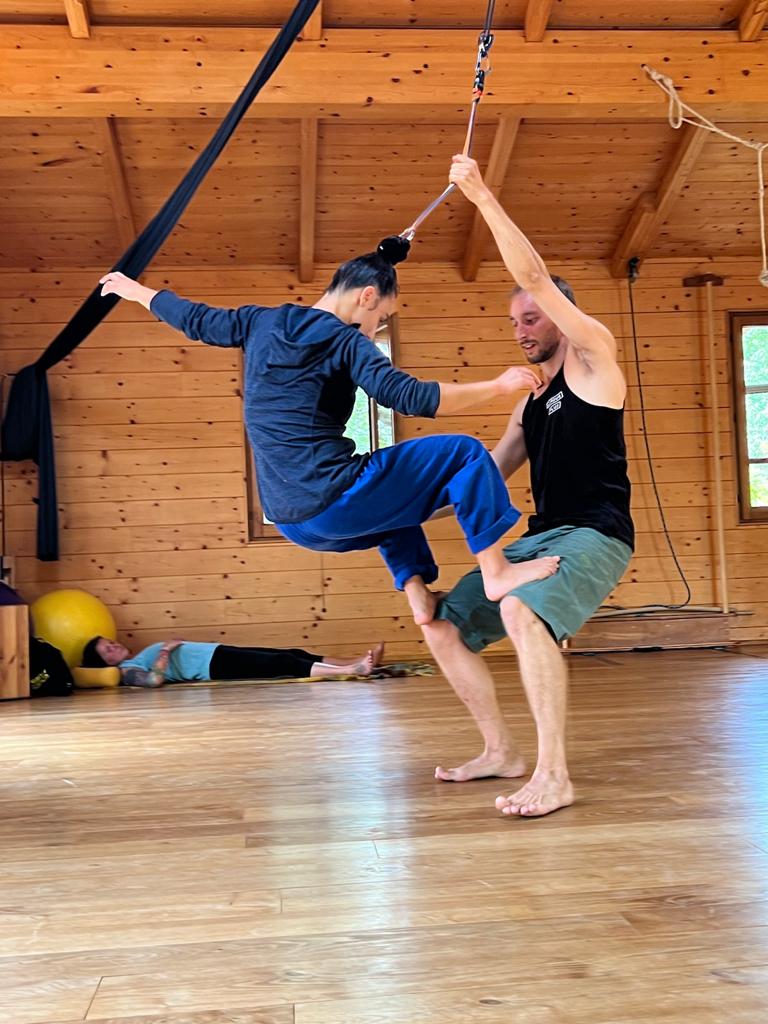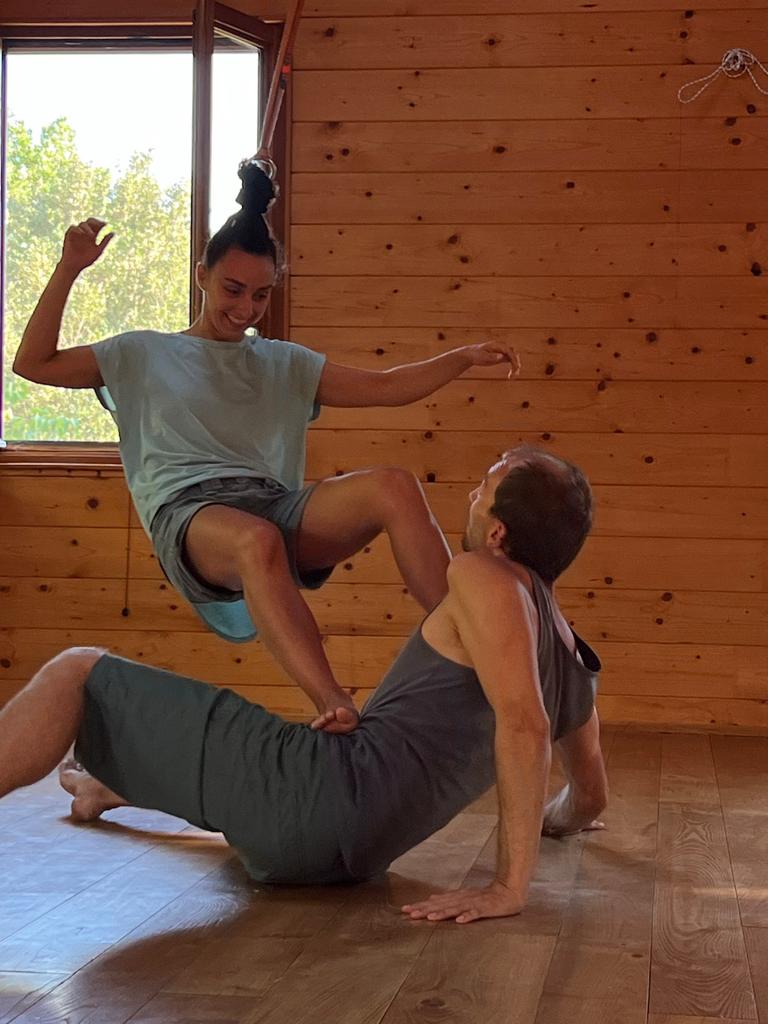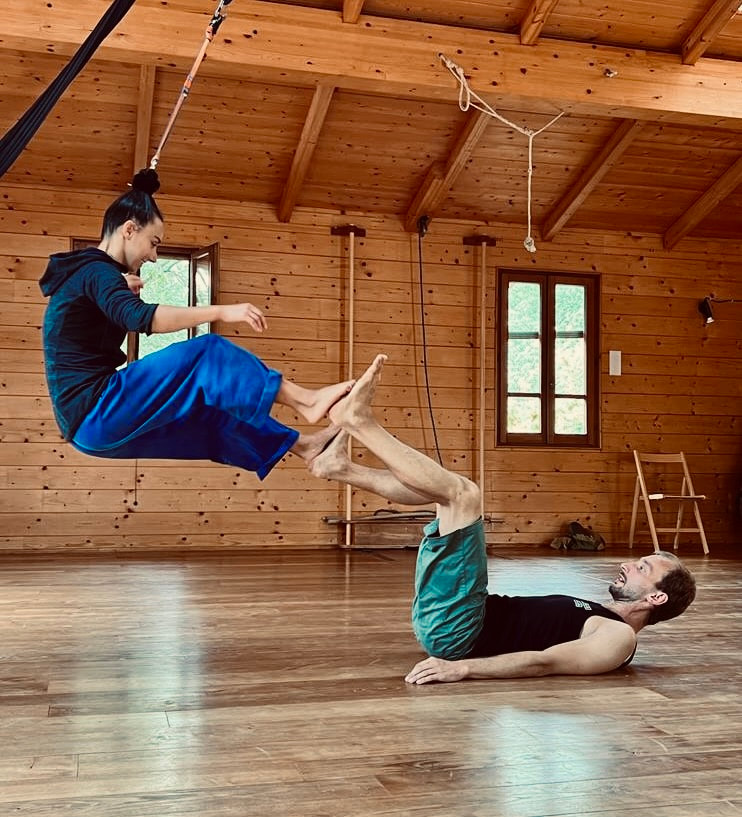A BODY AND OTHER OBJECTS (in creation)
Concept by Ana Jordão
Performed by Ana Jordão and Vincent Kollar
Sound Design Fabian Laute
Duration: 60 mins
Performed by Ana Jordão and Vincent Kollar
Sound Design Fabian Laute
Duration: 60 mins
What if we approached the body with the same curiosity and experimentation as we do with new objects, exploring, sensing, teasing, pushing boundaries?
A BODY AND OTHER OBJECTS reimagines the human body as both material and artefact, playing with the notions of animate and inanimate. It presents a dynamic interplay between human forms and various objects, creating surreal scenarios that magnify the unique qualities of each.
Departing from an object-oriented* perspective to the human body, the piece explores the interaction between the discipline of hair-hanging and the practices of partnering, object work, new magic, and performative rigging. From this innovatively hybrid language arises a mesmerising and evocative work, which accompanies the audience through a slow discovery of the magic of the suspended body, and gradually uncovers and welcomes the orchestra of all the objects that are involved in that magic.
In this immersive exploration of the intricate relationship between bodies and objects, the piece proposes a world where care is extended to all things, living and nonliving. Playing with the spectrum between male and female, body and object, visible and invisible, reality and illusion, the work invites the audience to momentarily abandon what they know about the body, only to rediscover the wonder of its boundless potential.
A BODY AND OTHER OBJECTS reimagines the human body as both material and artefact, playing with the notions of animate and inanimate. It presents a dynamic interplay between human forms and various objects, creating surreal scenarios that magnify the unique qualities of each.
Departing from an object-oriented* perspective to the human body, the piece explores the interaction between the discipline of hair-hanging and the practices of partnering, object work, new magic, and performative rigging. From this innovatively hybrid language arises a mesmerising and evocative work, which accompanies the audience through a slow discovery of the magic of the suspended body, and gradually uncovers and welcomes the orchestra of all the objects that are involved in that magic.
In this immersive exploration of the intricate relationship between bodies and objects, the piece proposes a world where care is extended to all things, living and nonliving. Playing with the spectrum between male and female, body and object, visible and invisible, reality and illusion, the work invites the audience to momentarily abandon what they know about the body, only to rediscover the wonder of its boundless potential.
Supported by:
Espaço do Tempo (PT) I Fonds Darstellende Künste (DE) I Pfefferberg Theater (DE) I CIRQUEON (CZ) I Kultur Räume Berlin (DE) I Panama Pictures (NL)
Espaço do Tempo (PT) I Fonds Darstellende Künste (DE) I Pfefferberg Theater (DE) I CIRQUEON (CZ) I Kultur Räume Berlin (DE) I Panama Pictures (NL)
